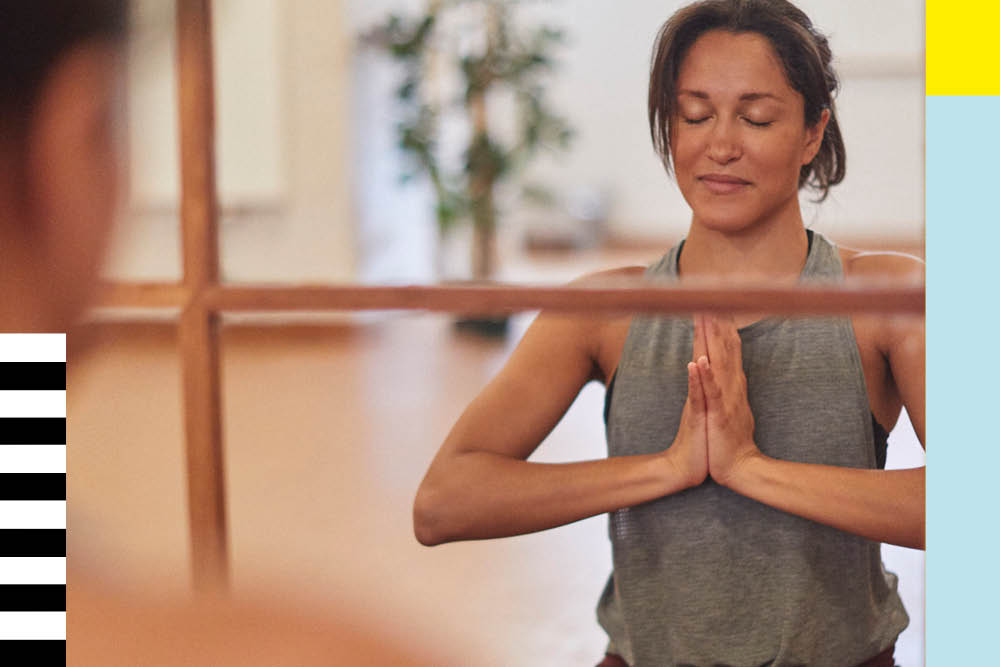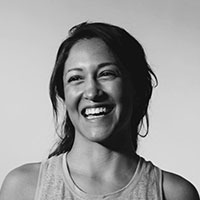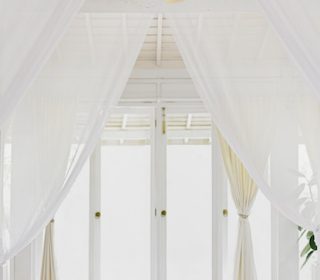5 yoga asanas to help you find some calm

With the UK still in lock-down, many of us may be worrying about the future; how long the virus will last and what life will be like on the other side of it. The thing we must all remember is that there will be another side and that we will adapt because that’s what humans do best.
During any period of uncertainty, it’s important to make time for your mind and body, to give them the chance to rest and restore. If you’ve ever taken a yoga class, it’s highly likely that at the beginning of class, the teacher has encouraged you to “get grounded” – but what does that really mean and why is it important?
Quite simply, it means for your mind and body to be in unison, to be present and in the moment. The mind is calm, free from worry of the past or future events and the body is physically connected to its surroundings. When considering this notion of ‘grounding’, it feels only right to discuss the chakras (the energy centres in the body) and specifically the first of the seven chakras – the muladhara chakra. This chakra is central to our wellbeing and is located at the base of the spine. It is often represented as a red lotus flower with four petals and is connected to the earth element. When this chakra is out of balance you may feel a sense of increased anxiety and this is when your yoga practice can really help. Below are 5 key yoga asanas that help balance this chakra and increase your sense of well-being. All you need is some floor space, a blanket and/or a cushion.
1. Sukhasana (cross-legged seated position)
Come to sit with your legs outstretched in front of you on the floor. Fold the legs in toward your body, separating the knees, crossing the shins, and slipping each foot beneath the opposite knee. Relax the feet so their outer edges rest comfortably on the floor and the inner arches settle just below the opposite shin. There should be a comfortable gap between the feet and the pelvis. Your hands can rest on top of the knees or thighs or in your lap. You want to have a tall spine in this pose. If you find that there is a rounding in the spine, you may be resting your weight on your tailbone instead of your sitting bones. To counter this, bring a cushion or folded blanket underneath you to help elevate the hips and boost your seat. Let gravity pull both the pubic bone and the tailbone gently toward the earth. Relax the hips, knees, and ankles
2. Vriksasana (or tree pose)
Come to Tadasana (standing, mountain pose). Find your Drishti (point of focus), this should be something static to help you to keep your balance. Begin to shift your weight into the left leg and gound through the four corners of your left foot. Bend your right knee, reach down with your right hand and clasp your ankle. Bring your right foot to the inside of your left leg either above or below your knee joint. Press your foot against your inner thigh or calf (wherever you’ve chosen to place your foot) and your inner thigh or calf back into your foot. Your right knee should be pointing out to the side. Keep your core muscles engaged. Lengthen your spine, soften your shoulders and tuck your chin slightly in and back. Bring your hands in front of your heart in Anjali Mudra (prayer position) or you can lift your arms up to the ceiling – if you take this option, arms should remain shoulder-width apart. Stay in this pose for 30 seconds to 1 minute. To come out of this, simply lower your leg and arms down as you exhale, and take a moment in Tadasana. Repeat on the other side.
3. Adho Mukha Svanasana (downward facing dog)
This pose is a great yoga asana for releasing tension from the entire spinal column. Begin by coming onto all fours with hands slightly in front of the shoulders on the floor. Spread your fingers wide and tuck your toes, distribute the weight equally across the hands and feet. On an exhalation, press away from the floor and lift the knees up, reaching the sitting bones back. Your arms and torso will be in one long line from your hands through to your tailbone. Let the arms press more into the ground as you lift your pelvis back and off your spine. The body should be in an inverted ‘V’ position now. As you deepen the posture, rotate the shoulders outward, releasing any tension from the neck and upper thoracic spine. Keep the length of the spine and with time allow the heels of the feet to draw down towards the floor.
4. Balasana (child’s pose)
The ultimate resting pose in my opinion and a great pose to do in between other asanas. It releases the hips and the lower back, while allowing the arms, head and neck to relax. Sit in a kneeling position and simply fold forward and rest your head on the floor with your arms resting on the floor alongside your heels. If your hips are very tight, you can bring a blanket or cushion underneath your buttocks and one underneath your forehead.
5. Baddha Konasana (bound-angle pose or cobblers pose)
This seated pose strengthens and opens the hips and groin and increases circulation to all the organs of the pelvis. A great yoga asana for symptoms related to menstrual or abdominal pain. To get into this pose, come to sit on the floor with your legs extended out in front of you. Draw the flesh of the buttocks back so you can feel the sit bones on the floor and centre your weight through them. Bend your knees and drawing your heels in toward your groin, bring the soles of your feet together. Maintain an upright position with your back, clasp your feet or your ankles and actively draw the knees out and down to the side. Stay in this position, with every cycle of breath, releasing the knees towards the floor. Either stay here or, begin to fold your torso forward, hinging from the hips. As you lower down, at a certain point (probably halfway down) you’ll notice that your lumbar curve naturally reverses. Allow your back to round slightly as you reach out through your head. Stay here for a minute or two.
Once you have completed this series of grounding yoga asanas, enjoy the feeling of calm in the mind and body and connection to the earth. Whenever you feel anxious or unsettled in future, come back to these yogas asanas, they are always here for you.













